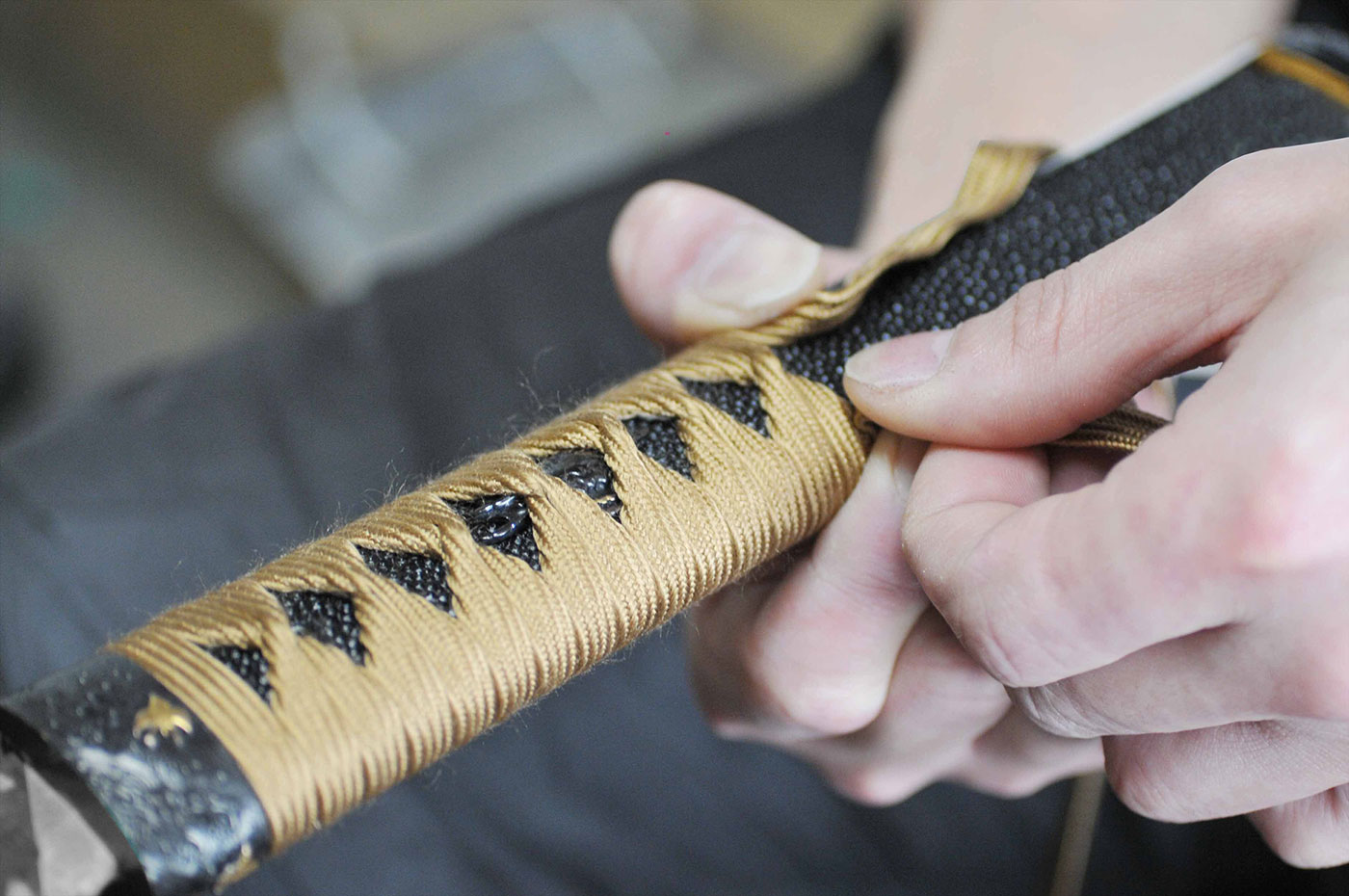
Polishing of Japanese swords serves two main purposes. One is to carefully polish the sword crafted by the swordsmith, bringing out the beauty of the steel and the hamon (temper line), thus breathing life into the sword.The other is to resharpen old Japanese swords, restoring their beautiful appearance. The polisher works closely with the sword, discovering their hidden beauty and shaping it into form. In this way, a sword polisher is not just a technician, but an artist with an artistic sensibility, requiring a sharp eye.
One of the attractions when admiring swords is the “blade engraving.” The various patterns and designs engraved on the blade each carry a special meaning. Japanese swords have been adorned with carvings for centuries, and these designs serve not only as decoration but also to highlight the artistic beauty of the sword, alongside its strength as a weapon.
“Koshirae” refers to the external fittings of a Japanese sword, also known as “tsukuri.” This includes the scabbard (saya), tang (nakago), handle (tsuka), guard (tsuba), and other components that make up the hilt and sheath of the sword. Over time, both the sword and its fittings have evolved, but the focus has not been solely on practicality. “Koshirae” holds significant meaning as it symbolizes the spirit, family lineage, and dignity of the samurai, serving as an important representation of these aspects.
When admiring a Japanese sword, many people focus on the features of the blade, such as the hamon (temper line) and the jigane (steel pattern), but the fittings of the sword, known as “koshirae,” are equally captivating. Among them, particular attention is drawn to the “tsuka” (handle), specifically the cord wrapped around it, known as “tsuka-maki.” In fact, tsuka-maki is not just decorative; it plays a crucial role in handling the sword. It provides a secure grip, ensuring control and stability when wielding the sword, in addition to its aesthetic value.
The craftsmen who create the scabbards for swords are known as “saya-shi.” This work involves a great deal of skill and many intricate processes. There are two main types of scabbards: the “shirasaya,” which is used for storing the sword at home, and the “koshirae,” which is used for carrying the sword while out. Each serves a different purpose. Additionally, the saya-shi are responsible for creating the “koshirae base,” which forms the foundation of the fittings. Their craftsmanship spans a wide range of techniques and requires considerable expertise.
The “saya” (scabbard) is an essential part of the Japanese sword, and the craftsmen who apply lacquer to its surface are called “nuri-shi.” By applying lacquer, they not only protect the blade securely but also elevate the sword beyond its functional role as a weapon, enhancing its artistic value. The process of lacquering plays a crucial role in preserving the sword and adding to its overall aesthetic appeal.
“Seppa” is an important component in the structure of a Japanese sword, serving as a metal fitting that is placed on both sides of the tsuba (guard) to hold it in place. The term “seppa” is also known as the origin of the Japanese idiom “seppa tsumaru,” which means “to be cornered” or “to be in a critical situation,” deriving from the idea of things being tightly pressed or constrained. Furthermore, the design of seppa varies depending on the type of sword, and it comes in a wide range of shapes and styles.
The “habaki” is an essential part of a Japanese sword, serving not only to securely fix the blade within the scabbard but also to protect the blade by preventing direct contact with the inside of the scabbard. There are two main types of habaki: the “ichiju-habaki” and the “nijū-habaki.” The “ichiju-habaki,” also known as the “tachi-habaki,” has a simple structure and is used on the “tachi” (long sword). It is made from a single sheet of metal.On the other hand, the “nijū-habaki” is used for “uchigatana” (shorter sword) and features a double-layered structure, consisting of a bulging “ue-gai” (upper shell) and the “shita-gai” (lower shell) that contacts the blade. Additionally, habaki are often engraved with family crests or decorative patterns, and their beauty has garnered admiration from collectors around the world.
At Tozando Shogoin Store, We actively purchase swords that you no longer need at a high price (only swords with an accompanying registration certificate).
Additionally, when you purchase a sword from our store, we provide high-value trade-ins for any unwanted swords you may have.
If you wish to sell your sword at the price you desire, we also offer consignment sales at our store. Please contact us through the inquiry form.